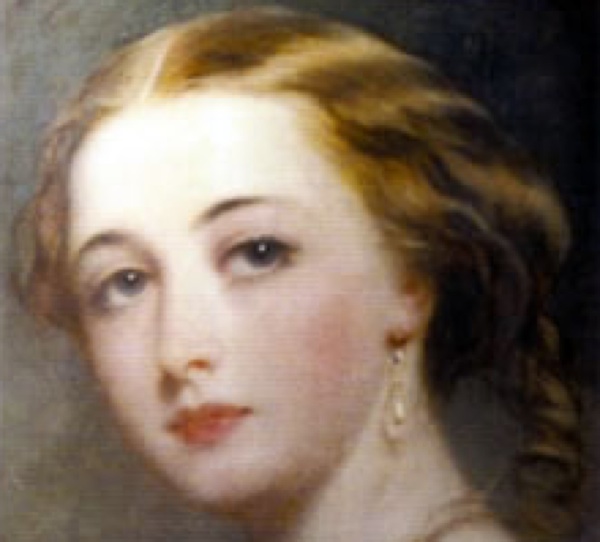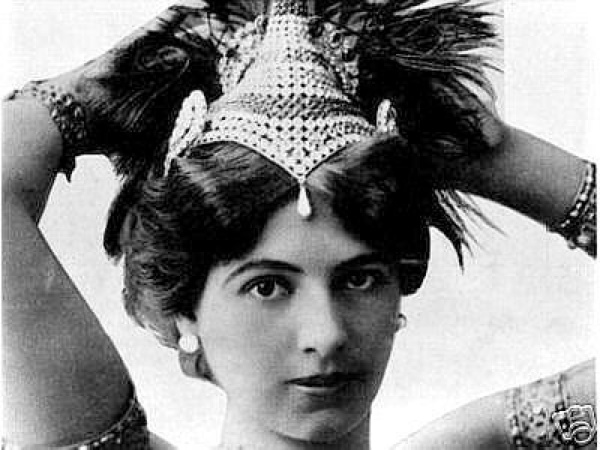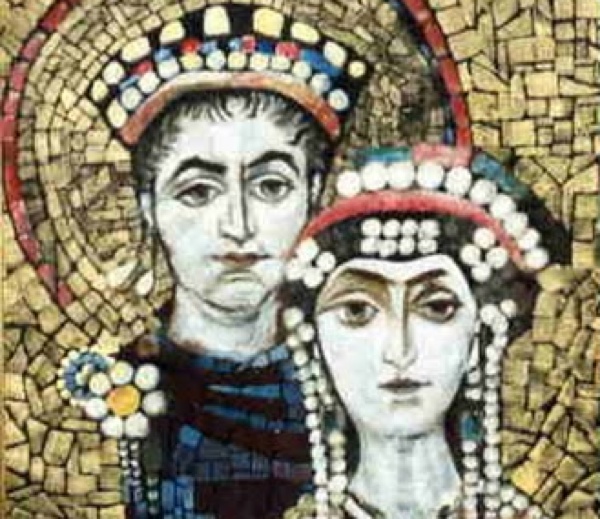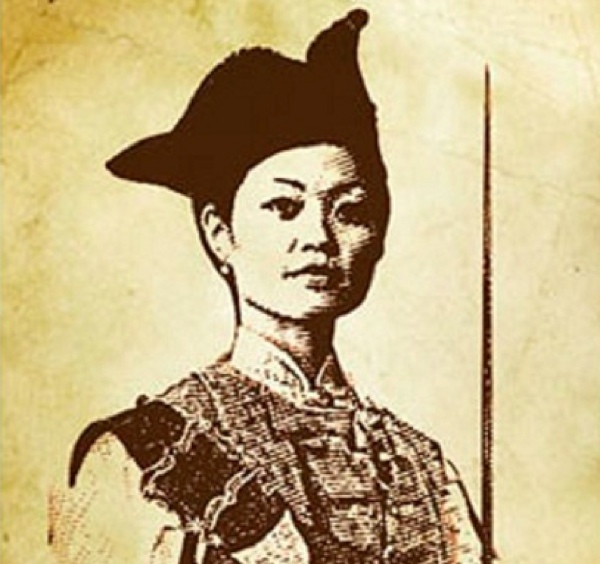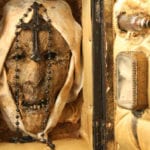I have tried to find a wide array of fascinating women to introduce to you today; some of them you may already be familiar with, others you may never have heard of and one or two you will probably find despicable.
Anna Ilona Staller AKA La Cicciolina (born 1951) began acting as a porn star in the early 1970s, though she didn’t go “hard-core” until 1983. So, what’s she famous for aside from having hard-core sex with multiple men on camera? In 1987, she was elected as a member of the Italian parliament. She remained in office as a member of the Radical Party until 1991, during which time she continued to make hard-core pornos and offered to have sex with Saddam Hussein in exchange for the release of foreign hostages and peace in the Middle East. She also enjoyed making political speeches with one large silicone filled breast exposed. In 2002, she renewed her offer to Hussein, and in 2006 she—wait for it—offered to have sex with Osama Bin Laden. “He can have me in exchange for an end to his tyranny. My breasts have only ever helped people while Bin Laden has killed thousands of innocent victims.” Neither Osama Bin Laden nor Saddam Hussein took up her offer. Laura Bell (1829-1894) became famous for her radiant beauty, wit and intelligence when working as a high class prostitute in Dublin in her teens. She eventually moved to London, where she would spend her days riding around Hyde Park in a gilded carriage drawn by two white horses and “entertaining” rich dukes and wealthy noblemen. When Laura was twenty-one, the Nepalese Prince Jung Bahadur Rana fell in love with her. It is said that over a period of ninety days Jung lavished Bell with gifts totaling £250,000, before he returned home to Nepal. In 1853, Laura married Captain August Frederick Thistlethwayte, and during their marriage she underwent a dramatic religious conversion, transforming from “The Queen of London Whoredom” into an Evangelist Preacher. She set out to enlighten the poor as to the ways of Jesus Christ, and held high-class evangelical tea parties in her home. Many flocked to hear her speak. Laura’s husband, being a bit eccentric, accidentally shot himself while attempting to summon his valet one morning in 1887. Laura never remarried, though she became great friends with William Ewart Gladstone, Prime Minister of Britain. They remained close until her death in 1894. Mary (A.D. 344–421) began working as a prostitute on the streets of Alexandria at age twelve. She is said, apparently by her own admission, to have had an insatiable sexual lust and to have derived great pleasure from her work, though she lived the life of a beggar. One day, after seventeen years of harlotry, Mary learned that hundreds of pilgrims were traveling to Jerusalem to celebrate the Feast of the Exaltation of the Cross. Mary saw an opportunity to make many potential customers in Jerusalem, so paid for food and passage to the city with her body. She can’t have had a lot of exposure to the teachings of the Lord during her life of vice, for when she reached Jerusalem she suddenly decided that Jesus was the only man for her and underwent a dramatic religious conversion. During this time she is said to have been visited by the Virgin Mary, who told her she would find peace across the River Jordan. Mary crossed the great river and wandered off into the desert where she continued to live a life of solitary prayer for forty-eight years. She had many visions during this time, probably as a result of dehydration. A priest named Zosimus eventually encountered the old woman—naked, with skin like blackened leather, and delirious from years alone in the desert. She fled from him, terrified, but he took up hot pursuit and when he caught her he wouldn’t let her be until she reluctantly relayed her entire story to him: prostitution, visions, and all. She died a few years later and is now known as “Saint Mary of Egypt, the Patron Saint of Penitence.” At eighteen years old, the beautiful and unusually tall Margaretha Zelle (1876-1917) married a man twenty-two years her senior, whom she met through a “lonely hearts” advertisement. The marriage quickly deteriorated into infidelity, abuse, and alcoholism on the part of her husband who apparently wasn’t quite ready to give up the life of a bachelor. They had two children, both of whom contracted syphilis from their father. The elder boy died when both children suddenly became violently ill, possibly from mercury poisoning. Margaretha separated from her husband in 1902 but he slandered her name so vehemently that she lost custody of her daughter and was left penniless. With no qualifications to speak of, Margaretha briefly turned to prostitution to get together enough money to make her way to Paris, where she began her career as an exotic dancer. She became a sensation, dancing almost completely naked except for a tiny gilded bra. Her beauty—coupled with her elaborate fabricated tales of her past—gave her an almost sacred air, and men flocked from all over Paris to see her. She quickly branched out to Spain, Monte Carlo and Germany. As her dancing career waned due to younger, more talented competition, she became a high class courtesan. She was one of the highest paid in Europe at the time, entertaining many rich dukes, lords, and marquises. Sadly, through an unclear set of circumstances, she was convicted of espionage, imprisoned, and executed by firing squad on 14 October 1917. It is still not known whether she really was a spy or was just the victim of overzealousness on the part of the British and French intelligence services—or even used as a scapegoat by her then-lover, who actually was a double-agent. Thirty years later, one of her prosecutors admitted that “we didn’t have enough evidence against her to flog a cat.” Yu Xuanji (roughly A.D. 844-868) grew up in the Tang Dynasty capital of Chang’an, where she lived and worked in the Pleasure District from an early age. Yu Xuanji adopted poetry as a personal art form and throughout her lifetime she wrote vivid, intensely emotional poems, around fifty of which survive today. She also had a book of poetry published during her lifetime but the works it contained have long since been lost. Around the age of sixteen, Yu Xuanji became a concubine to Censor Li Yi. Li Yi’s wife became increasingly jealous though, and Li Yi eventually abandoned Yu Xuanji in the south of China, where she dwelt alone in the mountains for a while before returning penniless to Chang’an. She continued to work as a courtesan before entering the Xianyi Convent and training as a Taoist “priestess.” Amongst her duties as a priestess, she probably would have had to “entertain” gentlemen clients. While living at the convent, she is believed to have become suspicious that a maidservant was having intimate relations with Yu Xuanji’s lover. This apparently caused her to fly into such a rage that she beat the maid to death and buried her in the garden, where her body was later discovered by the foul smell emanating from the earth. Yu Xuanji was arrested, tried for the maid’s murder, and executed by beheading. It is very possible that Yu Xuanji was falsely accused of the crime, though we will probably never know for certain. She was only around twenty-eight years old when she died.
At age nine, Sarah Priddon (around 1692-1724) was employed as an apprentice seamstress but was fired after she lost an expensive piece of lace. She returned home, and soon after began to take advantage of her new skills as a seamstress by stealing one of her mother’s petticoats and cutting it down to size for herself. Her father, enraged at the destruction of her mother’s garment, stripped Sarah naked, tied her to the cellar stairs, and beat her mercilessly with a horsewhip. He left his daughter there for the night, telling her he would return in the morning to finish the job. She “vigorously made use of tooth and nail” and escaped her bonds, after which she fled. With no other way to survive, she began working as a prostitute in the slum district of St Giles. By fourteen she was famous for her wit and beauty and many wealthy men sought the services of “Sally Salisbury,” as she came to be known. She had a quick temper which, coupled with a tendency to get into debt, saw her landed in jail multiple times throughout her life. She is said at one point to have escaped a hefty jail sentence because the judge was infatuated with her. In 1723, during an argument with a customer called John Finch she picked up a bread knife and stabbed him in the chest. She was immediately remorseful and rushed to get help. Though Finch amiably forgave her, Salisbury was sentenced to a year in the notorious Newgate Prison for violent assault. While imprisoned, she succumbed to serious illness and, a few months before her scheduled release, Salisbury died of what was described by one journalist as “brain fever brought on by debauch” (very probably syphilis). Beautiful, blue-eyed, platinum-blonde Barbara Payton (1927-1967) began her career as a model, gracing the pages of glossy fashion magazines. She began acting in Hollywood in 1949 and soon shot to stardom in the 1950s film Kiss Tomorrow Goodbye; by this time she was earning $10,000 a week. She continued to grace the silver screen until 1963, but during this time her reputation was destroyed on account of her many love affairs with married men, reckless partying and heavy drinking. She also attempted suicide by overdosing on sleeping pills. She had a violent, four-year-long relationship with the actor Tom Neil, who had previously beaten one of Payton’s lovers almost to death, putting him in a coma and breaking multiple bones in his body. Neil ended up being imprisoned after shooting his third wife in the back of the head. Payton’s last years consisted of a string of arrests for prostitution, public drunkenness, petty thefts and drugs. She lived in filthy, rat-infested apartments and was often homeless. She ended up selling herself for five dollars a trick on Sunset Boulevard. She gained large amounts of weight, was stabbed, and lost teeth during the regular beatings she received at the hands of her tricks. When offered a chance to go to rehab, she said “I would rather drink and die.” Payton moved back to her parents’ house in 1967, and later that same year died of heart and liver failure on the bathroom floor. Sada Abe was born into an upper middle-class family in Tokyo in 1905. When she was fifteen years old, Sada Abe was raped by an acquaintance, and her behavior began to deteriorate until her father sold her to a Geisha house when she was seventeen. Sadly, Sada Abe didn’t have what it took to be a “high-class” Geisha, and ended up performing cheap sex favors for clients for five years until she contracted syphilis. At this point, she decided to leave the Geisha house and become a licensed prostitute, which paid better. After a few flings with married men and a run-in with the law, she eventually met Kichizo Ishida who was the first man who could fully satisfy her insatiable sexual needs. She fell madly in love with him, but, when she realized he would always belong to another woman (as he was married) she decided that she had to kill him. Around 2 a.m. on the eighteenth of May, 1936, she used her sash to strangle Kichizo Ishida to death as he slept. She then carved her name into his left arm, cut off his genitals which she put in her handbag, and swiftly left the hotel room they were staying in. During the three days before she was arrested, she practiced necrophilia with her dead lover’s member. When she was arrested, Sada Abe told police that she took his penis because it was the part of him that reminded her most vividly of their time together. She served only five years in prison, for second-degree murder and mutilation of a corpse, and after her term she eventually disappeared. Theodora (A.D. 500-548) began working in a brothel in Constantinople as a child prostitute, having sex with sleazy low-class customers. By the age of fourteen she had upgraded to “acting” in the hippodrome, where she would perform sex acts and nude antics on stage (this would also have included providing sexual services for customers after the show). At age twenty, after being abandoned by her abusive lover, she experienced a dramatic religious conversion to Miaphysite Christianity. She then took up the humble art of wool spinning, and it was during this time that she caught the eye of Justinian, heir to the Byzantine throne. They married in A.D. 525, and two years later Justinian became Emperor and Theodora the Empress of Rome. Theodora became the most powerful woman in Byzantine history, imposing the death penalty for rape, giving women the rights to initiate divorce and own property, abolishing sex slavery and the exposure of unwanted infants, and opening convents where ex-prostitutes could go to make an honest living. Though she did a lot of good, according to some writers she could be pretty ruthless and malevolent when threatened, employing torture and poisoning to exact retribution against those who spoke ill of her or her husband. The famous historian Procopius even went so far as to describe Theodora as a bloodthirsty demon. She died at age of forty-nine, of what most people presume to be some form of cancer. In 1801, Ching Shih (c. 1775-1844) was working as a brothel slave on a floating Cantonese pleasure house when she was taken captive by the Pirate admiral Zheng Yi. Captivated by the prostitute’s beauty and unusual height, Zheng Yi asked her to marry him. The cunning Ching Shih agreed to the marriage on the condition that she be entitled to fifty percent of all profits that Zheng Yi made, and that she be allowed to command one of his pirate fleets. The smitten captain eagerly agreed. The pair became a formidable force, and within three years of the marriage they were in command of one of the most powerful pirate fleets in China, named the Red Flag Fleet, which comprised more than 1,500 ships. In 1807, Zheng Yi was killed and Ching Shih took his place at the head of the pirate armada. Ching Shih was as formidable as she was ruthless, and within a year the Red Flag Fleet was one of the largest navies in the world. She extorted taxes and levies from coastal townships in exchange for sparing them, and began to impose her own laws. Retribution was swift and punishment severe for any man or woman who attempted to defy her. Ching Shih defeated multiple fleets sent by the hostile Chinese government, as well as the British and Portuguese navies. In 1810 the Chinese government had no choice but to admit defeat. They offered amnesty to Ching Shih and all other pirates who would give up their ships and arms. Ching Shih accepted the offer on the condition that she be able to keep the extensive amount of loot she had obtained during her racketeering years. The Chinese government agreed, and Ching Shih, at thirty-four years old, retired a very wealthy woman. She opened a combined gambling house and brothel, and lived to the ripe old age of sixty-nine.

